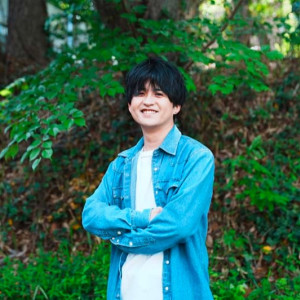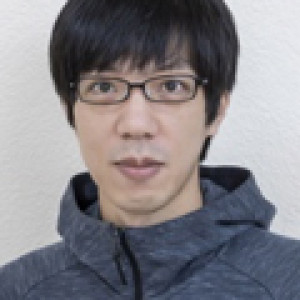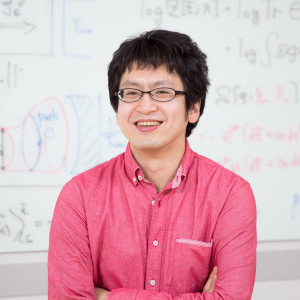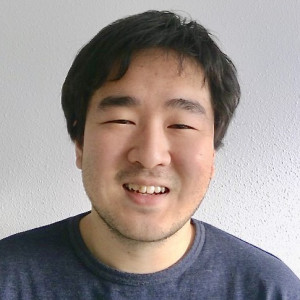Volume 281
Back to Newsletter List
Upcoming Events
Seminar
Quantum Computation SG Seminar
Energy spectrum and time evolution of a SU(2) pure gauge lattice theory on a quantum annealer
December 18 (Mon) 14:00 - 15:00, 2023
Emanuele Mendicelli (Postdoctoral Research Associate, Department of Mathematical Sciences, University of Liverpool, UK)
Lattice gauge theory is an indispensable tool for non-Abelian fields, such as those in quantum chromodynamics where lattice results have been of central importance for several decades. Recent studies suggest that quantum hardware could extend the reach of lattice gauge theory to inaccessible phenomena due to the need for an exponentially large amount of resources, the so-called sign problem.
Among the available quantum hardware gate-based quantum computer are well know but less common quantum annealer can play a role too. In this talk we briefly report one of the first use of D-Wave quantum annealer to study the energy spectrum and the time evolution of a SU(2) pure gauge lattice theory in its Hamiltonian formulation. In particular we present how to extract the energy spectrum using the quantum Quantum Annealer Eigensolver algorithm and perform the time evolution using the Kitaev-Feynman clock states. Despite the nosy hardware, no error mitigation techniques were needed but the usability of the D-Wave hardware was extended by simply block-diagonalizing the Hamiltonian.
Reference
- Sarmed A Rahman, Randy Lewis, Emanuele Mendicelli, Sarah Powell, SU(2) lattice gauge theory on a quantum annealer, Phys. Rev. D 104, 034501 (2021), doi: 10.1103/PhysRevD.104.034501, arXiv: 2103.08661
Venue: Seminar Room #359, 3F Main Research Building, RIKEN / via Zoom
Event Official Language: English
Seminar
iTHEMS Biology Seminar
Application of mathematical models to the COVID-19 cohort study
December 19 (Tue) 16:00 - 17:00, 2023
Takara Nishiyama (Ph.D. Student, Graduate School of Science, Nagoya University)
The COVID-19 pandemic, which began in 2019, has caused widespread morbidity and mortality across the globe. In response, a multitude of studies focusing on SARS-CoV-2 have been undertaken. Among these, cohort studies have been particularly significant. These studies, as a key observational research method, play a crucial role in exploring the links between various factors and the onset of diseases, offering valuable insights for disease control. Mathematical model, applied within these studies, provide essential quantitative data. In my talk, I will introduce how mathematical models are instrumental in cohort studies, drawing on two of my own COVID-19 cohort studies as examples.
Venue: Hybrid Format (3F #359 and Zoom), Main Research Building, RIKEN Wako Campus
Event Official Language: English
Seminar
iTHEMS Theoretical Physics Seminar
Inflationary Cosmology with a scalar-curvature mixing term $\frac{1}{2} \xi R \phi^2$
December 20 (Wed) 16:00 - 17:30, 2023
Payel Sarkar (Visiting Researcher, Kyoto University)
We use the PLANCK 2018 and the WMAP data to constraint inflation models driven by a scalar field $\phi$ in the presence of the non-minimal scalar-curvature mixing term $\frac{1}{2}\xi R \phi^2$. We consider four distinct scalar field potentials $\phi^p e^{-\lambda\phi},~(1 - \phi^{p})e^{-\lambda\phi},~(1-\lambda\phi)^p$ and $\frac{\alpha\phi^2}{1+\alpha\phi^2}$ to study inflation in the non-minimal gravity theory. We calculate the potential slow-roll parameters, predict the scalar spectral index $n_s$, tensor-to-scalar ratio $r$, leading and higher order non-Gaussianity parameters ($f_{NL},~\tau_{NL}$ and $g_{NL}$) and the amplitude of the scalar spectrum $A_s$ in the parameter ($\lambda, p, \alpha$) space of the potentials corresponding to different values of the non-minimal coupling parameter $\xi$. We have compared our results with the ones existing in the literature, and this indicates the present status of non-minimal inflation after the release of the PLANCK 2018 data.
Reference
- Payel Sarkar, Ashmita, Prasanta Kumar Das, Inflationary Cosmology with a scalar-curvature mixing term $\frac{1}{2} \xi R \phi^2$, Annals Phys. 454 (2023) 169340 (2023), doi: 10.1016/j.aop.2023.169340, arXiv: 2205.05532
Venue: Hybrid Format (3F #359 and Zoom), Main Research Building, RIKEN Wako Campus / via Zoom
Event Official Language: English
Seminar
Quantum Matter Seminar
A symmetry principle for gauge theories with fractons
December 22 (Fri) 17:00 - 18:15, 2023
Yuji Hirono (Program-Specific Associate Professor, Department of Physics, Division of Physics and Astronomy, Graduate School of Science, Kyoto University)
Fractonic phases are emergent quantum phases of matter that host excitations with restricted mobility. Although these phases have been considered to be of “beyond Landau” order, we show that a certain class of gapless fractonic phases are realized as a result of spontaneous breaking of generalized symmetries. The corresponding symmetries are continuous higher-form symmetries whose conserved charges do not commute with spatial translations, and we refer to them as nonuniform higher-form symmetries. For a given set of nonuniform symmetries, the effective theory associated with the spontaneous breaking of them can be constructed. At low energies, the theories reduce to known higher-rank gauge theories such as scalar/vector charge gauge theories, and the gapless excitations in these theories are interpreted as Nambu–Goldstone modes for higher-form symmetries. Due to the nonuniformity of the symmetry, some of the modes acquire a gap, which is the higher-form analogue of the inverse Higgs mechanism of spacetime symmetries. In this formulation, the mobility restrictions are fully determined by the choice of the commutation relations of charges with translations. This approach allows us to view existing (gapless) fracton models such as the scalar/vector charge gauge theories and their variants from a unified perspective and enables us to engineer theories with desired mobility restrictions.
Field: condensed matter physics
Keywords: fractonic phases, higher-form symmetries, Nambu-Goldstone modes, Higgs mechanism, gauge theories
Reference
- Yuji Hirono, Minyoung You, Stephen Angus, Gil Young Cho, A symmetry principle for gauge theories with fractons, arXiv: 2207.00854
Venue: via Zoom
Event Official Language: English
Lecture
RIKEN Quantum Lecture
Rapid development of cold-atom quantum computers and their prospect
December 26 (Tue) 13:30 - 17:00, 2023
Takafumi Tomita (Assistant Professor, Photo-Molecular Science, Institute for Molecular Science)
Note for participants:
For on-site participants, please register via the registration form.
For online participants finding the Zoom link, you can get it after filling the registration form.
Program:
13:30-15:00 Lecture 1
15:00-15:30 Coffee break
15:30-17:00 Lecture 2
Abstract:
In this talk, I will give an overview of the recent rapid progress of cold-atom quantum computers. In a cold-atom quantum computer, a laser-cooled atomic gas in a vacuum chamber is captured with a two-dimensional trap array called an optical tweezers array, which is an array of tightly focused laser beams. An array of cold single atoms thus created is initialized, gate operated, and readout with other laser beams. Because of its controllability and scalability, the cold-atom quantum computer has been attracting much attention, as one of the most promising candidates in the race to develop quantum-computer hardware. I will describe the characteristics and development trends of the cold-atom hardware, as well as the development of a cold-atom quantum computer at Institute for Molecular Science including the realization of an ultrafast quantum gate using ultrashort laser pulses.
Venue: #435-437, 4F, Main Research Building, RIKEN Wako Campus / via Zoom
Event Official Language: English
Lecture
Introduction to Effective Field Theory and Many-Body Problems
December 27 (Wed) - 28 (Thu) 2023
Masaru Hongo (Assistant Professor, Department of Physics, Faculty of Science, Niigata University)
Quantum field theory (QFT) has been formulated as a theoretical tool to describe elementary particles and nuclei. However, after introducing the concept of "effective field theory," QFT has been providing a general and powerful theoretical framework for describing various universal phenomena in broader range of physical systems, including condensed matter physics and statistical physics.
In this lecture, we will explore the basic aspects of field theory by employing it to address quantum many-body problems in simple nonrelativistic systems.
The topics covered will include:
Lecture 1: Low-energy scattering and renormalization in quantum mechanics
Lecture 2: Effective field theory of low-energy scattering
Lecture 3: Spontaneous symmetry breaking in weakly-interacting bose gas
Lecture 4: Effective field theory of superfluid
Lecture 5: Introduction to in-medium potential
Lecture 6: Complex-valued in-medium potential between heavy impurities in ultracold atoms
The aim is to provide an introductory overview and explanation of basics concepts in field theory.
Schedule:
Wed., Dec. 27
10:00 - 11:30: Lecture 1
13:00 - 14:30: Lecture 2
15:00 - 16:30: Lecture 3
Thur., Dec. 28
10:00 - 11:30: Lecture 4
13:00 - 14:30: Lecture 5
15:00 - 16:30: Lecture 6
Venue: Hybrid Format (3F #359 and Zoom), Main Research Building, RIKEN Wako Campus
Event Official Language: English
Seminar
Math-Phys Seminar
Application of Modular tensor category to Lattice gauge theory
December 29 (Fri) 10:30 - 16:00, 2023
Tomoya Hayata (Assistant Professor, Faculty of Economics, Keio University)
Inspired by the recent development in quantum computers, much efforts have been devoted to exploring their potential applications in lattice gauge theories. However, in contrast to condensed matter systems, we face many challenges in applications of quantum computations to lattice gauge theories, where one of the major obstructions lies in implementation of gauge symmetries in quantum computations. In this seminar, I talk about a possible solution to the problem based on a unitary modular tensor category, expressing the Hamiltonian of lattice gauge theories in terms of the so called F moves, and implementing the F moves on quantum computers.
References:
TH, Y. Hidaka, JHEP 09 (2023) 126; JHEP 09 (2023) 123.
Venue: Seminar Room #359, 3F Main Research Building, RIKEN
Event Official Language: English
Seminar
ABBL-iTHEMS Joint Astro Seminar
Probing structure of neutron stars through X-ray bursters
January 12 (Fri) 14:00 - 15:15, 2024
Akira Dohi (Special Postdoctoral Researcher, Astrophysical Big Bang Laboratory, RIKEN Cluster for Pioneering Research (CPR))
Type-I X-ray bursts are rapidly brightening phenomena triggered by the nuclear burning of light elements near the surface of accreting neutron stars. Most of the X-ray bursters show irregular behavior of light curves. However, some X-ray bursters are somehow quite regular, i.e., constant recurrence time and constant shaper of light curves, and are often called Clocked bursters, which are powerful sites to probe uncertainties of many model parameters such as accretion rate, the composition of accreted matter, reaction rates, neutron star structure, and temperature. In this study, we focus on the uncertainties of the equation of states, which determines the latter two properties. Based on our numerical models covering whole areas of neutron stars, we will present their impact on X-ray burst light curves. Furthermore, we will discuss the possibility of constraining the equation of states from Clocked bursters such as GS 1826-24 and 1RXS J180408.9-342058.
Venue: Seminar Room #359, 3F Main Research Building, RIKEN / via Zoom
Event Official Language: English
Seminar
iTHEMS Seminar
Dust-driven instabilities in protoplanetary disks: toward understanding formation of planetesimals
January 17 (Wed) 10:30 - 11:30, 2024
Ryosuke Tominaga (Special Postdoctoral Researcher, Star and Planet Formation Laboratory, RIKEN Cluster for Pioneering Research (CPR))
Planet formation starts from collisional growth of sub-micron-sized dust grains in a gas disk called a protoplanetary disk. They are expected to grow toward km-sized objects called planetesimals. The resulting planetesimals further coalesce by gravity and form planets. However, there are some barriers preventing planetesimal formation, which includes fast radial drift and collisional fragmentation of dust grains. To circumvent the barriers and to explain planetesimal formation, previous studies have proposed hydrodynamic instabilities of dusty-gas disks. The instabilities can cause dust clumping, and planetesimals form if the resulting clumps collapse self-gravitationally. We have been investigating the linear/nonlinear development of these dust-gas instabilities. We also found a new instability driven by collisional growth of dust, which can bridge a potential gap between the first dust growth and the later planetesimal formation via the previous instabilities. In this talk, I will introduce our work on the dust-driven instabilities and their impact on planetesimal formation.
Venue: Hybrid Format (3F #359 and Zoom), Main Research Building, RIKEN Wako Campus
Event Official Language: English
Workshop
Second Workshop on Fundamentals in Density Functional Theory (DFT2024)
February 20 (Tue) - 22 (Thu) 2024
The density functional theory (DFT) is one of the powerful methods to solve quantum many-body problems, which, in principle, gives the exact energy and density of the ground state. The accuracy of DFT is, in practice, determined by the accuracy of an energy density functional (EDF) since the exact EDF is still unknown. Currently, DFT has been used in many communities, including nuclear physics, quantum chemistry, and condensed matter physics, while the fundamental study of DFT, such as the first principle derivations of an accurate EDF and methods to calculate many observables from obtained densities and excited states. However, there has been little opportunity to have interdisciplinary communication.
On December 2022, we had the first workshop on this series (DFT2022) at Yukawa Institute for Theoretical Physics, Kyoto University, and several interdisiplinary discussions and collaborationd were started. To share such progresses and extend collaborations, we organize the second workshop. In this workshop, the current status and issues of each discipline will be shared towards solving these problems by meeting together among researchers in mathematics, nuclear physics, quantum chemistry, and condensed matter physics.
This workshop mainly comprises lectures/seminars on cutting-edge topics and discussion, while a half-day session composed of contributed talks is also planned.
This workshop is partially supported by iTHEMS-phys Study Group. This workshop is a part of the RIKEN Symposium Series.
The detailed information can be found in the workshop website.
Venue: 8F, Integrated Innovation Building (IIB), Kobe Campus, RIKEN / via Zoom
Event Official Language: English
Person of the Week
Self-introduction: Pratik Nandy
2023-12-11
I am Pratik Nandy, a theoretical physicist from India. After graduating from the Indian Institute of Science, Bangalore, in 2022, I moved to the Yukawa Institute for Theoretical Physics (YITP), Kyoto University, as a postdoctoral researcher in the Extreme Universe Collaboration (ExU). I joined iTHEMS in November 2023. My research interests include understanding quantum chaos in holography and condensed matter physics by using various quantum information theoretic quantities, such as entanglement and complexity. Recently, I have been working on the formulation of quantum chaos in dissipative systems and quantum field theories, especially systems with holographic duals, such as Sachdev-Ye-Kitaev (SYK) models and their double-scaled variations. I believe these systems can teach us important lessons about the quantum nature of gravity in de Sitter (dS) and Anti-de Sitter (AdS) space.
I am based at the SUURI-COOL, Kyoto University campus, where I am also affiliated with the YITP. I regularly visit the Wako campus and look forward to discussions with various experts from interdisciplinary environments. I will be happy to assist you if you plan to visit SUURI-COOL, Kyoto.
Paper of the Week
Week 3, December 2023
2023-12-14
Title: Stealth dark matter spectrum using LapH and Irreps
Author: Richard C. Brower, Christopher Culver, Kimmy K. Cushman, George T. Fleming, Anna Hasenfratz, Dean Howarth, James Ingoldby, Xiao Yong Jin, Graham D. Kribs, Aaron S. Meyer, Ethan T. Neil, James C. Osborn, Evan Owen, Sungwoo Park, Claudio Rebbi, Enrico Rinaldi, David Schaich, Pavlos Vranas, Evan Weinberg, Oliver Witzel
arXiv: http://arxiv.org/abs/2312.07836v1
Title: Complex-valued in-medium potential between heavy impurities in ultracold atoms
Author: Yukinao Akamatsu, Shimpei Endo, Keisuke Fujii, Masaru Hongo
arXiv: http://arxiv.org/abs/2312.08241v1
Title: Spin relaxation rate for baryons in thermal pion gas
Author: Yoshimasa Hidaka, Masaru Hongo, Mikhail Stephanov, Ho-Ung Yee
arXiv: http://arxiv.org/abs/2312.08266v1
Title: Thermomagnetic Anomalies by Magnonic Criticality in Ultracold Atomic Transport
Author: Yuta Sekino, Yuya Ominato, Hiroyuki Tajima, Shun Uchino, Mamoru Matsuo
arXiv: http://arxiv.org/abs/2312.04280v1
If you would like to cancel your subscription or change your email address,
please let us know via our contact form.
Copyright © iTHEMS, RIKEN. All rights reserved.








